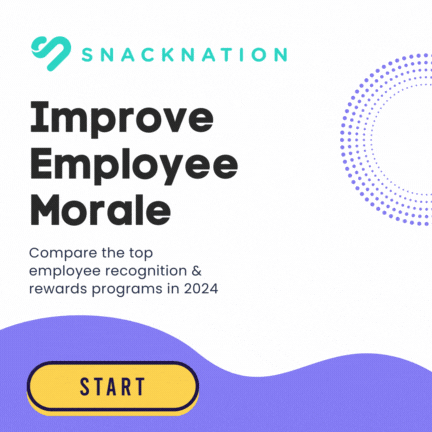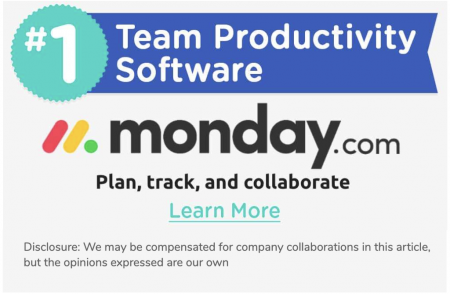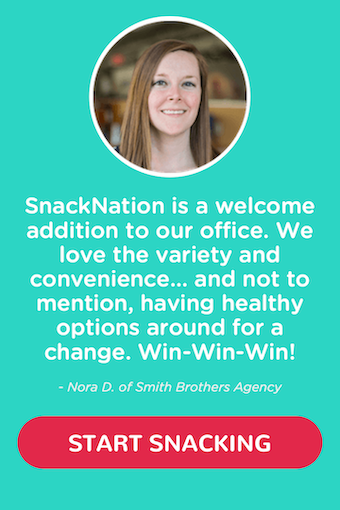Anyone trying to improve employee engagement needs to first understand the most effective drivers of employee engagement.
After all, would you launch into a personal initiative to lose weight without first finding out what things make a person lose weight?
Keep reading to find out what factors drive employee engagement and learn exactly how and why they deepen engagement. (Some of the factors may even surprise you!)
Workplace research and surveys have pointed to the need to improve employee engagement year after year. In fact, startling research shows that companies may lose up to $2,246 per year for every disengaged employee they have on the roster. The same research suggests up to 67% of employees are not engaged.
How do those numbers shake down in theory?
If Company A has 1,000 employees, then up to 670 of them may be disengaged.
If this company does in fact lose $2,246 per each disengagement employee, then they’re losing a whopping total of $1,504,820 per year.
Employee engagement matters, and it’s far too expensive to ignore.
Employee Engagement Drivers
Employee Welfare
- Why it drives engagement: Employees with high welfare, “the state of doing well, especially in respect to good fortune, happiness, well-being, or prosperity,” can focus on, and engage in, their work; they’re not distracted by worrying about a million other things, such as paying rent or buying groceries.
- Supporting statistic: In Analysis of employee engagement and its predictors, researchers isolated, by surveying over 600 employees at one company, employee welfare as a factor of maximum impact on employee engagement. In fact, 58.4% of respondents said that wellness actually improves their performance.
Employee Empowerment
- Why it drives engagement: How invested can you be in a world where you’re constantly being told what to do? Employee empowerment drives engagement by giving workers the chance to make their own decisions and assert ownership over the benefits and consequences of those decisions.
- Supporting finding: Analysis of employee engagement and its predictors also revealed empowerment as a key employee engagement driver; employees need to feel involved in decisions to be truly engaged at work.
Work Environment
- Why it drives engagement: People have accepted the old saying, “You are what you eat,” for years. However, we’ve never heard anyone say, “You are where you work.” But if you give this concept a little thought, then you’ll see just how true it is.
Would you be able to write an in-depth research paper on a noisy school bus? Could you be a charming liaison to your clients if you worked in a dirty broom closet?
The point? Our work environments affect our work, for the good and for the bad.
- Supporting statistic: In one workplace engagement case study, about 87% of subjects agreed that work environments affect their work and their engagement.
The study authors underscored the importance of the work environment by writing, “The work environment is metaphorically referred to as the ‘second home’ of employees due to the fact that it occupies a central space in the entire life of every worker.”
Career Opportunities
- Why it drives engagement: Consider opportunity the perpetual dangling carrot that keeps people striving for the next step, the next big thing.
- Supporting finding: Aon Hewitt Consulting isolated career opportunities as one of the top 3 drivers of employee engagement. Their reports suggest employees hate feeling stuck, with no window to advance or develop. Providing ample opportunities for growth will keep employees engaged.
Brand Alignment
- Why it drives engagement: When employees share a company’s missions and values, they feel in sync in their roles. Engaged employees willingly put in hours they feel will benefit a shared mission.
- Supporting finding: Aon Hewitt Consulting noticed that brand alignment fell within the top 3 drivers of employee engagement. Employees tend to feel unsatisfied and disengaged when their values don’t align with the principles of the brand.
Leadership Listening
- Why it drives engagement: Doesn’t it feel good to have a voice, to be heard? Knowing the people around you hear and respect your thoughts and ideas feels good in all aspects of life: home, work, school, social interactions, and more.
In a workplace context, having leadership teams who listen will make employees feel even more like important parts of their companies.
- Supporting finding: The author of a CommunityVoice Forbes post points to an example of the power of listening.
“The company began collecting confidential employee feedback each quarter to pinpoint engagement issues and areas for improvement. By amplifying the employee voice and thoughtfully taking action in response, the company saw quick results. They increased engagement scores across the company and have invested in a true culture of feedback.”
Relationships
- Why it drives engagement: Interpersonal relationships drive our lives and our behaviors in more ways than we realize. Our relationships affect the way we talk, the way we eat, and the way we work. When employees form relationships with other engaged employees, engagement, work participation, and happiness thrive.
- Supporting finding: One article from Harvard Business Review points to research on soldiers to illustrate the important interplay between work relationships and job engagement and fulfillment. The author writes,
“Camaraderie is more than just having fun. It is about creating a common sense of purpose. Studies have shown soldiers form strong bonds during missions because they believe in the purpose, rely on each other, and share the good and the bad as a team. Camaraderie promotes a group loyalty that results in shared commitment.”
Trust
- Why it drives engagement: Let’s get personal for a minute. Would you get engaged to a person you didn’t trust?
We didn’t think so.
In the working world, most employees are unlikely to engage with an employer they don’t trust.
- Supporting finding: A qualitative case study found that trust and bonds between employees and leadership make effective drivers of employee engagement.
Rewards and Recognition
- Why it drives engagement: Can you recall the last time someone applauded your work? It made you feel good, right? And chances are, you didn’t skive off the rest of the day; you probably returned to your work with renewed satisfaction and motivation.
According to Gallup, a firm that has done extensive research on employee engagement, recognition “. . . provides a sense of accomplishment and makes employees feel valued for their work. Recognition not only boosts individual employee engagement, but it also has been found to increase productivity and loyalty to the company, leading to higher retention.”
- Supporting finding: Aon Hewitt Consulting’s annual deep dive into employment engagement trends has pinpointed rewards and recognition as a top engagement driver year after year. That’s why it is important to have a reward system in place to run effective rewards and recognition programs to boost employee motivation and engagement.
Bonus! The 10 Cs of Employee Engagement
One literature review scoured through research to find several factors critical to building employee engagement. It just so happens that all the factors start with the letter C:
Some of the 10 Cs repeat our other engagement drivers, but we just had to include them again for this handy mnemonic device.
1. Connect (This refers to the ability of leaders to connect with employees and help them understand their worth in the company.)
Example: A manager who doesn’t just email a “great job” when employees submit excellent work, but who also follows up with meaningful in-person conversations.
2. Career (This refers to the promise of career advancement.)
Example: A workplace where employees have opportunities to take classes, try out new roles, and grow into challenging positions that already exist or are created specifically to give them the growth they crave.
3. Clarity (This refers to leadership’s ability to communicate the company’s vision.)
Example: A company leader who understands a mission in both theoretical and practical terms and can rally employees, during all-hands staff meetings, to do what it takes to pursue the ultimate vision.
4. Convey (This refers to leadership’s ability to communicate expectations.)
Example: A manager who transparently puts all expectations out on the table instead of “testing” employees to see if they have proper anticipation.
5. Congratulate (This refers to employee recognition, and the alchemy that occurs when leadership applauds employees for a job well done.)
Example: A leader who makes the entire company feel like a part of any and every company success and accomplishment.
6. Contribute (This refers to employees’ perceptions that their work matters in the grand scheme of things.)
Example: A workplace that benchmarks the duties of every role against the path toward a greater, long-term mission.
7. Control (This refers to employees’ agency to control their schedules and work processes.)
Example: A company where employees can carve out their own preferred ways of working instead of following prescribed processes.
8. Collaborate (This refers to the engaging magic of highly functioning teams.)
Example: Workplaces that support teamwork in a variety of ways.
9. Credibility (This refers to a situation when employees can feel proud about the company’s processes and mission.)
Example: Companies who stay transparent when things go well and also when things go poorly.
10. Confidence (This refers to employees’ confidence in their employers and in themselves.)
Example: Companies who encourage employees to build confidence by taking risks and also trying out new ideas.













